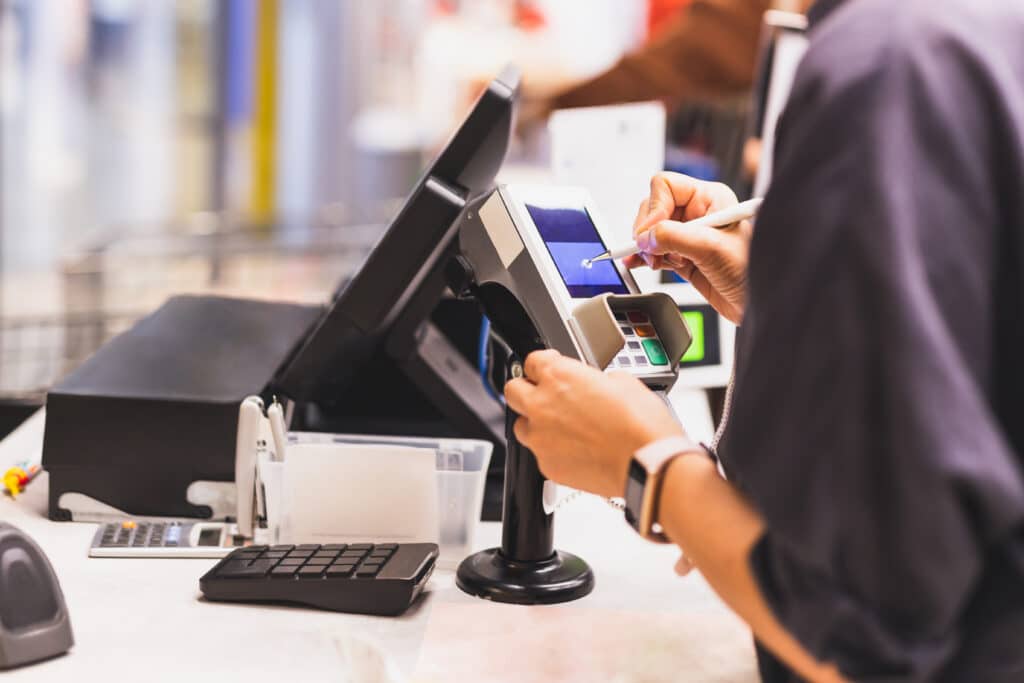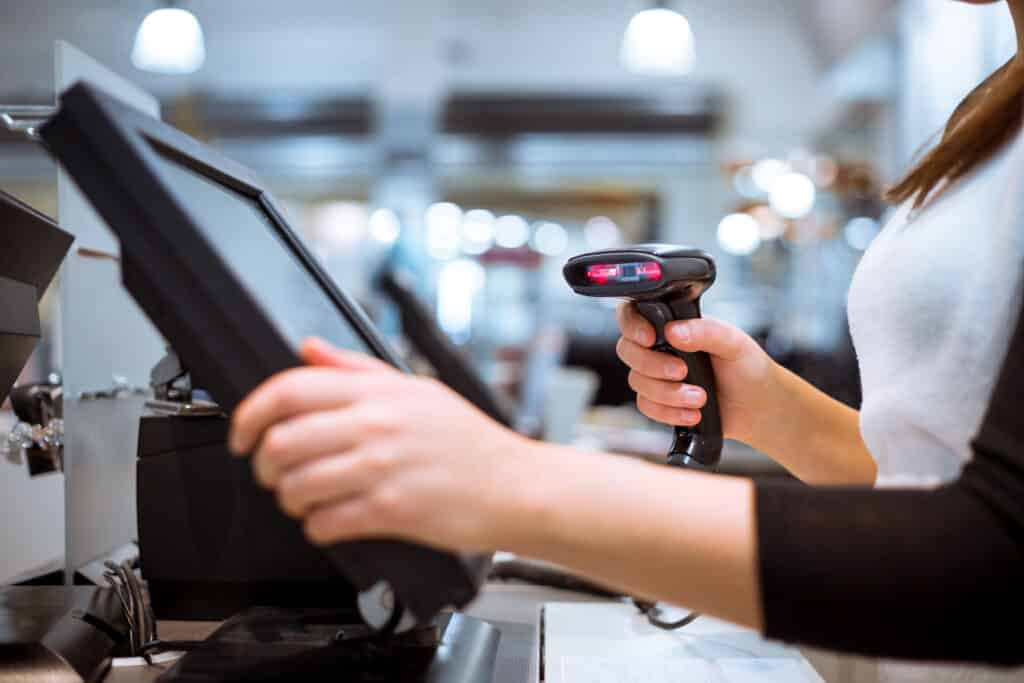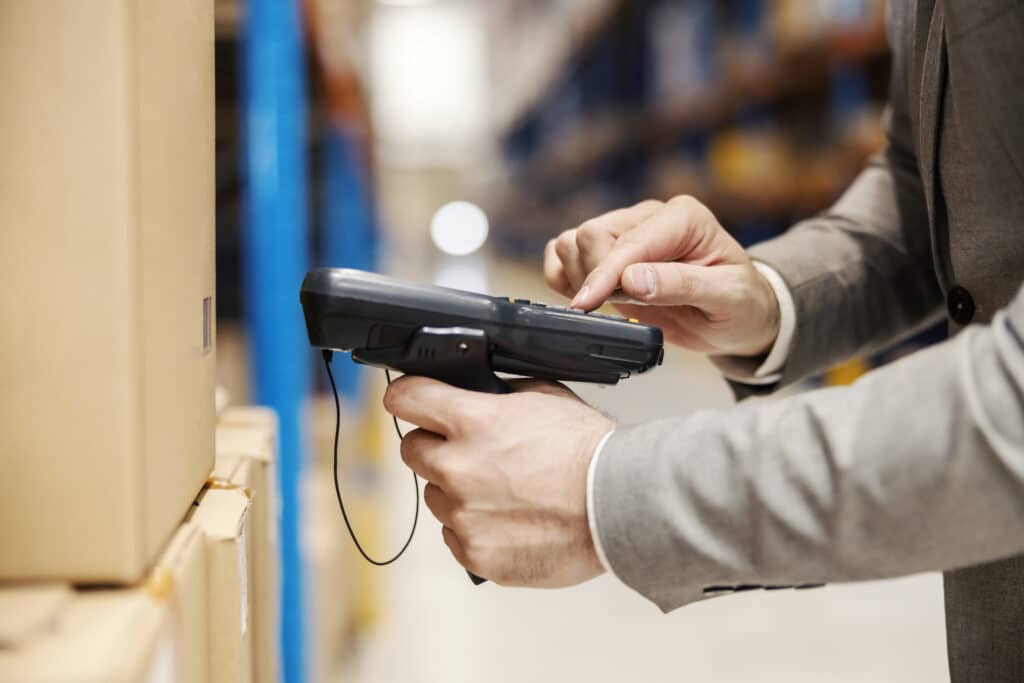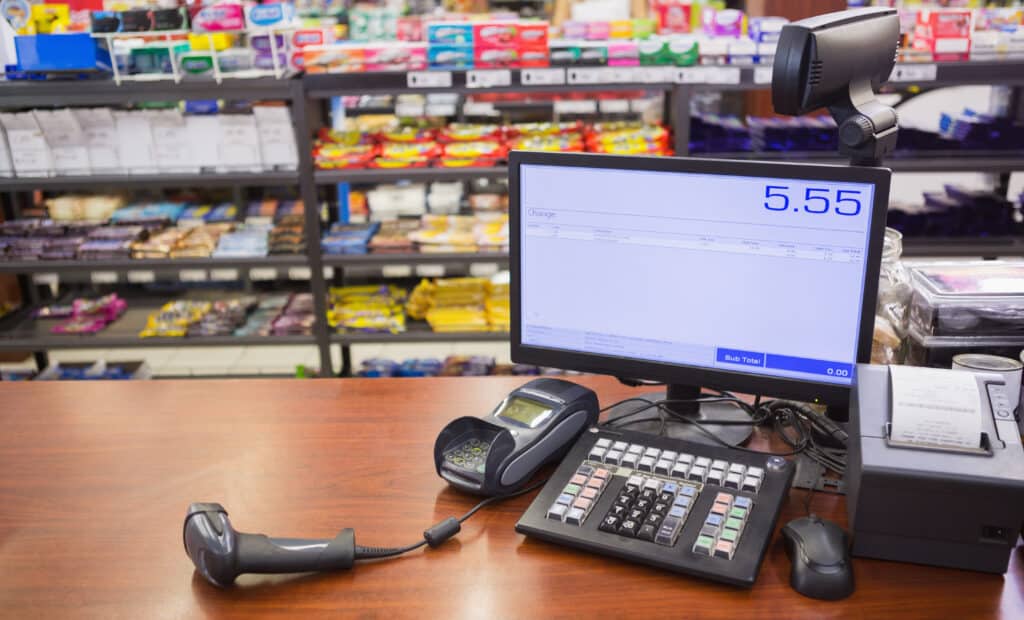In today’s fast-paced retail landscape, keeping up with technological advancements is crucial for businesses to thrive. One such advancement that has revolutionized the way retailers operate is the Point of Sale (POS) system. But what exactly is a POS system and why has it become an indispensable tool for retailers? From streamlining transactions to managing inventory, this article will delve into the intricacies of POS systems to shed light on their purpose and significance in the world of retail. So buckle up as we embark on a journey to unravel the mysteries behind this essential technology!
What is a POS system?
A POS system, short for point-of-sale system, is a software and hardware combination that allows retailers to manage their sales transactions. It serves as the central hub where all sales activities take place, from the initial product scan to the final payment process. But a modern POS system does much more than just processing sales. It is equipped with features such as inventory management, employee tracking, customer relationship management (CRM), and analytics tools.

The primary purpose of a POS system for retailers is to streamline their operations and improve efficiency. Retailers can save time by automating tasks like inventory management and employee tracking. A POS system gives real-time data on sales performance, helping retailers make informed decisions about pricing or stock.
Another key benefit of a POS system is it helps create a seamless customer experience. With features like CRM tools built into the software, retailers can track customer preferences and buying behaviors. This enables them to provide personalized service or targeted promotions based on individualized data insights. By making each interaction with customers more meaningful and tailored, businesses can enhance customer loyalty and increase repeat visits or purchases.
Overall, a POS system goes beyond facilitating transactions by offering valuable functionalities that help businesses run smoothly and provide enhanced customer service. Retailers who understand its importance are better equipped to stay ahead in today’s competitive market landscape.
How does a POS system work?
A POS system is a software and hardware combo that helps retailers sell things more easily. It connects different parts of the business and helps manage inventory, track sales, and process payments. The system usually has a computer or tablet with special software, a cash register or card reader for payments, and extras like barcode scanners and receipt printers.
One key aspect of how a POS system works is through its ability to integrate with other business systems. For example, it can sync up with an inventory management system to automatically update stock levels based on sales made at the point of sale. This prevents overselling or running out of popular items by giving retailers real-time visibility into their inventory. Additionally, many POS systems have built-in customer relationship management tools that store purchase history and help businesses understand their customers’ preferences better.
A POS system needs to securely handle different types of payments like cash, credit cards, mobile payments, and cryptocurrency. It encrypts customer information during transactions to protect against data breaches. A POS system integrates various business processes into one unit for retailers.
Software components of a POS system
When it comes to a point of sale (POS) system, the software components play a crucial role in ensuring seamless and efficient operations for retailers. The first essential software component is the POS terminal software, which acts as the central hub of the system. This software is responsible for processing sales transactions, managing inventory, and generating reports. It provides retailers with real-time data on sales volumes, profit margins, and stock levels, allowing them to make informed decisions about pricing strategies and order replenishments.
Another key software component is the customer relationship management (CRM) software integrated into the POS system. CRM software enables retailers to collect and analyze customer data such as purchase history, preferences, and contact information. By leveraging this data effectively, retailers can create targeted marketing campaigns, personalized promotions or offers that resonate with their customers’ preferences. Moreover, CRM integration also facilitates loyalty programs by tracking customers’ rewards points accumulated through purchases.
Retailers can use a reporting feature to understand how their business is doing. They can see things like sales trends and how well employees are performing. Analytics tools help them find patterns or unusual things in sales data. This can help them make decisions about things like inventory or training. In summary, while hardware is important in a POS system, software is also very important.
Hardware components of a POS system
- POS terminal The POS terminal is the hardware on which your POS software operates. You can install mobile POS software on any device that has an internet connection, including tablets, smartphones, desktop computers, or laptops.
- Cash drawer the cash drawer, an essential component of a POS system, plays a crucial role in the transaction process for retailers. It serves as a secure storage space for cash and other forms of payment.
- Tablet or smartphone When it comes to choosing between a tablet or smartphone for a POS system, retailers may find themselves faced with a tough decision. Both devices have their advantages and disadvantages, and ultimately it depends on the specific needs of the business.

- Barcode scanner the barcode scanner is perhaps one of the most essential components of a POS system for retailers.
- Credit and debit card reader These small devices allow merchants to easily accept electronic payments and process transactions quickly and efficiently.
- Receipt printer the receipt printer can print receipts in a matter of seconds, allowing customers to complete their transactions quickly and move on with their day.
- Label printer enables retailers to track stock levels accurately and make informed decisions about purchasing.
The benefits of using a POS system
Using a POS system offers numerous benefits for retailers, making it an essential tool in today’s competitive market. Firstly, a POS system streamlines the sales process by automating tasks such as inventory management and employee scheduling. This not only saves time but also reduces human error, ensuring accurate data and smoother operations. Additionally, with a POS system, retailers can easily track sales trends and customer behavior through detailed reports. These insights help businesses make informed decisions on stock levels, promotions, and pricing strategies.
Another advantage of using a POS system is its ability to enhance customer experience. By integrating various payment options such as credit cards and mobile wallets, retailers can cater to different customer preferences effectively. Moreover, these systems enable efficient order processing and seamless checkout experiences with features like barcode scanning and digital receipts. This not only speeds up the transaction process but also reduces wait times for customers.
Businesses can use information from customers’ purchases to personalize marketing campaigns. Loyalty programs can be added to the point-of-sale system to encourage customers to keep coming back. Using a modern point-of-sale system has many benefits for retailers. It saves time and reduces mistakes by automating tasks like inventory management. It also provides helpful reports that can be used to make important decisions.
What features should a POS system have?
A POS system needs to have good inventory management. This means being able to keep track of inventory accurately. It helps retailers know how much stock they have, avoid running out of stock or having too much, and know when to reorder. A good POS system will make this process easier by giving real-time updates on inventory, automatically reordering when needed, and making reports on sales trends to predict future demand. Another important feature is that the POS system should work well with other business tools. This includes accounting software, e-commerce platforms, and customer relationship management (CRM) systems. When the POS system can easily connect with these tools, it makes managing different parts of the business more efficient and effective.

Retailers can learn about customer behavior, trends, and popular products by analyzing transaction data. This information can help them make better decisions about pricing, promotions, and marketing to increase sales and improve their business. To improve retail operations, it’s important to carefully choose which features to include in a POS system.
Mobile checkout
One of the most innovative features of modern POS systems is mobile checkout. This game-changing technology allows retailers to process transactions right on the sales floor, eliminating the need for customers to wait in long lines at a traditional cash register. With mobile checkout, a tablet or smartphone equipped with a card reader becomes a portable point-of-sale terminal.
Mobile checkout offers several benefits for both retailers and customers. Firstly, it enhances customer satisfaction by reducing waiting times and providing a more seamless shopping experience. Customers can easily approach an employee with a mobile device, make their purchase, and leave. Mobile checkout also helps retailers by reducing lines at regular registers during busy times and allowing staff to help customers in the store.
Multichannel inventory management
One of the biggest challenges retailers face is managing inventory across multiple channels. With the rise of e-commerce, brick-and-mortar stores are no longer the sole source of revenue for many businesses. Now, retailers must balance inventory between their physical locations and online platforms, such as their own website or third-party marketplaces like Amazon and eBay.

Multichannel inventory management is crucial to ensure that customers have access to products regardless of where they choose to shop. It allows retailers to optimize stock levels across all channels, reducing the risk of overstocking or running out of a popular product. By centralizing inventory data and using integrated software solutions, retailers can gain real-time visibility into their stock levels and make informed decisions about replenishment strategies.
Effective multichannel inventory management improves customer satisfaction. Customers can confidently buy items knowing they are in stock. This reduces abandoned carts and frustrated customers. Offering options like BOPIS or ship-from-store adds convenience and flexibility to the buying process.
Centralized reporting and analytics
Centralized reporting and analytics are important for retailers who use POS systems. This feature allows businesses to collect and analyze data from multiple locations. By gathering all transaction data, including sales, inventory, and customer information, retailers can find trends and patterns across stores. This helps them make better decisions and improve their operations. They can customize products, enhance staff performance, and promote successful items at other locations.
Furthermore, centralized reporting and analytics offer a comprehensive view of the overall business performance. Retailers can compare key metrics across different time periods or branches to pinpoint areas for improvement or potential opportunities. If one store consistently sells more than other stores, retailers can find out why and use those strategies in stores that aren’t doing as well. It also helps managers keep track of how well employees are doing with detailed sales reports, so they can provide training or recognition when needed.
In addition to these benefits, centralized reporting and analytics provide an efficient way to manage inventory levels across multiple stores. By closely monitoring stock quantities through accurate real-time data updates from each point of sale terminal, retailers can avoid overstocking items that aren’t selling well while ensuring popular items don’t run out-of-stock at any location. This not only reduces costs associated with excess inventory but also improves customer satisfaction by minimizing instances of unavailability.
Flexible order fulfillment options
As online shopping continues to dominate consumer preferences, retailers are under immense pressure to provide flexible order fulfillment options that meet customers’ expectations. Gone are the days when standard home delivery was enough – today’s consumers want choices. Retailers must adapt and offer a range of options such as buy online, pick up in-store (BOPIS), same-day delivery, and even ship-from-store.
The rise of BOPIS has been particularly prominent in recent years, allowing customers to shop conveniently from the comfort of their homes while avoiding shipping fees. This option not only saves money but also enables shoppers to get their hands on products faster. Similarly, same-day delivery services have gained popularity due to the instant gratification they provide. With the ability to receive items within hours or even minutes of placing an order, consumers no longer have to wait days for their purchases.
To remain competitive in today’s market, retailers must stay ahead of customer demands by offering flexible and convenient order fulfillment options. By embracing strategies like BOPIS and same-day delivery, retailers can enhance both customer satisfaction and loyalty. The key lies in understanding shoppers’ needs and tailoring fulfillment methods accordingly – thereby delivering a seamless purchasing experience that keeps customers coming back for more.
The 4 types of POS systems
1. Traditional Cash Registers: The original point of sale system, cash registers have been a mainstay in retail for decades. They are simple and reliable, but lack the advanced features found in modern POS systems. However, they still serve a purpose for small businesses with minimal inventory tracking needs.
2. Mobile Point of Sale (mPOS): Smartphones and tablets have led to the creation of mPOS systems. These systems let retailers accept payments while on the move. They are especially popular among food trucks, pop-up shops, and boutique stores that don’t have space for traditional counters or cash registers. mPOS allows retailers to process transactions outside of a physical store, making them more flexible and efficient.
3. Cloud-Based POS: Cloud-based POS systems are a good choice for retailers because they don’t require servers or complicated software. They offer benefits for both big and small retailers. With cloud technology, you can access sales data in real-time from anywhere with internet. It’s also easy to update and scale the system as your business grows. Cloud-based POS systems have secure encryption to protect customer information.
4. Tablet-Based POS: Combining the mobility of mobile devices with the functionality of traditional point-of-sale terminals, tablet-based POS systems are gaining popularity in various industries such as hospitality and retail.
How to choose the best POS system
When it comes to choosing the best POS system for your retail business, there are several factors to consider. First and foremost, you need to determine the specific needs of your business and what features are most important to you. Are you a small boutique that requires simple inventory management and customer sales tracking? Or are you a large department store that needs advanced reporting capabilities and integration with other systems?

Another key consideration is the type of industry you are in. A restaurant, for example, may require a POS system with specific features like tableside ordering or split check functionality. On the other hand, a clothing store may prioritize barcode scanning and mobile payment options. It’s essential to select a POS system that caters specifically to the unique requirements of your industry.
One often overlooked aspect when choosing a POS system is scalability. While it’s crucial to find a system that meets your current needs, it’s equally important to think about future growth. Will the software be able to handle an increase in transaction volume or additional locations? You don’t want to invest in a system only to outgrow it within a few years.
To find the best POS system for your retail business, you need to evaluate your needs, industry requirements, and growth potential. Consider user reviews and ask other retailers for recommendations. This will help you make an informed decision that benefits your business and customers in the long run.
What’s the best POS system for retail?
Retailcloud is a popular choice for retailers looking for the best POS system. It has a user-friendly interface and many useful features. What makes it different from other systems is that it is cloud-based, meaning store owners can access their data and manage their inventory from anywhere. This is convenient and allows for real-time tracking of sales and inventory levels.
One of the standout features of Retailcloud is its seamless integration with e-commerce platforms. This means that retailers can easily sync their online stores with their physical locations, keeping inventory in check across all channels. Additionally, Retailcloud offers advanced analytics capabilities, providing valuable insights into customer buying patterns and sales trends. With this information at hand, retailers can make informed decisions regarding product selection and marketing strategies.
Retailcloud is scalable and can be customized for small boutiques or multi-store enterprises. You can add or remove features as your business grows or changes. Retailcloud offers a complete solution for retailers to manage employee schedules and process transactions efficiently in today’s competitive market.
Overall, when considering the best POS system for retail businesses, it’s hard to ignore the merits of Retailcloud.
Working with United Banc Card of TN
If you find yourself wanting to conquer your restaurant, retail shop look no further than United Banc Card of TN. With their innovative solutions and trusted POS System services, they will guide you towards financial success. Whether you are a small business owner or an individual looking to manage your finances better, United Banc Card of TN has the tools and expertise to help. Call us today @ 615-476-0255
